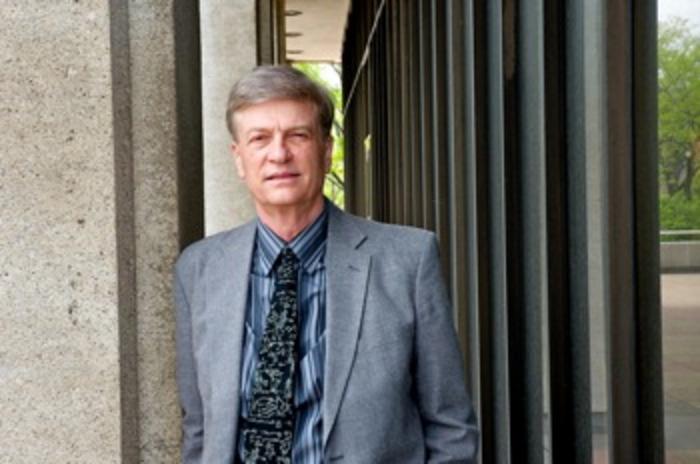
In the rapidly evolving landscape of cancer treatment, CAR T cell immunotherapy stands out as one of the most groundbreaking advancements, harnessing the body’s own immune system to target and eradicate malignant cells. This innovative therapy modifies a patient’s T cells—critical white blood cells responsible for immune defense—empowering them to identify and destroy tumors. While CAR T cell therapy has demonstrated remarkable success against blood cancers such as lymphoma and leukemia, its applicability remains limited due to the complex and costly nature of T cell harvesting and processing. Scientists at Case Western Reserve University are now pioneering a novel technology aimed at revolutionizing this process, potentially making CAR T therapy more accessible and affordable worldwide.
The current standard procedure for obtaining T cells involves leukapheresis, an intricate and expensive operation that extracts immune cells by withdrawing large volumes of blood from the patient. Specialized centrifugation equipment separates the immune cells from red blood cells and plasma before returning the remaining blood. This logistical complexity confines treatment availability largely to specialized cancer centers and often restricts its use as a last-resort intervention when other therapies fail. Addressing these challenges, a collaborative team of physicists, cell biologists, and immunologists at Case Western Reserve University has introduced CAPGLO (Capture and Glow), a device that leverages magnetic fields and fluorescent tagging to isolate T cells swiftly and with minimal resource requirements.
CAPGLO’s operation is elegantly simple yet scientifically profound. Rather than relying on heavy machinery and large blood volumes, CAPGLO functions by magnetizing T cells using tiny beads conjugated with proteins that specifically bind to these lymphocytes. Once magnetized, a magnetic field segregates the T cells from other blood components in a fraction of the time traditional methods demand. Fluorescent tags attached to the beads enable direct visualization of the captured cells, providing immediate confirmation and quality assessment. This technology requires only about a half-pint of blood—the typical amount donated during blood drives—dramatically reducing patient burden and procedural complexity.
.adsslot_3g67eT5LGn{width:728px !important;height:90px !important;}
@media(max-width:1199px){ .adsslot_3g67eT5LGn{width:468px !important;height:60px !important;}
}
@media(max-width:767px){ .adsslot_3g67eT5LGn{width:320px !important;height:50px !important;}
}
ADVERTISEMENT
The interdisciplinary collaboration behind CAPGLO underscores the power of combining expertise across scientific domains. Robert Brown, a physicist and distinguished professor, brought his extensive knowledge of magnetic manipulation and blood diagnostics, previously demonstrated in his patented malaria detection technology based on magnetic iron crystal identification. Cell biologist Susann Brady-Kalnay and immunologist David Wald complemented this expertise with insights into cellular behavior and immunotherapy processes. Together, their joint efforts have culminated in the CAPGLO prototype, which promises to reduce the costs of T cell harvesting from sizes measuring in the hundreds of thousands of dollars to mere hundreds, an achievement that could democratize access to CAR T therapies.
Mechanistically, CAPGLO’s magnetic separation exploits the biophysical properties of engineered beads. Kathleen Molyneaux, a senior research associate in Brady-Kalnay’s lab, developed magnetic beads coated with proteins that specifically recognize and bind to T cells. When mixed in a blood sample, these beads latch onto the target cells, enabling their separation when subjected to an external magnetic field created by the device. Subsequent to isolation, the system is designed to gently detach the beads, ensuring that the purified T cells are viable and free of magnetic materials, ready for genetic modification—specifically the insertion of chimeric antigen receptors (CARs) in Wald’s specialized laboratory facilities.
This targeted approach addresses key limitations in current CAR T cell production workflows. Conventional protocols can take several days to weeks to expand the modified T cells before reinfusion into patients. In contrast, Wald’s concurrent advancements include an ultra-fast procedure that can establish and expand CAR T cells in under 24 hours, synergizing perfectly with CAPGLO’s rapid cell harvesting. By integrating these methodologies, there is potential to reduce the overall therapy turnaround time significantly, enabling faster patient treatment commencement and improved outcomes, especially important for aggressive malignancies.
Moreover, CAPGLO’s envisaged affordability transcends mere clinical convenience; it offers equity in cancer care. High costs and specialized infrastructure have so far restricted CAR T therapy predominantly to well-funded cancer centers, mostly in developed countries. By making the frontend process of extracting T cells cheaper and more portable, CAPGLO may pave the way for these lifesaving treatments to be offered in community hospitals, remote areas, and economically diverse settings, thereby narrowing the disparity in cancer treatment accessibility globally.
Beyond the immediate application to oncology, the principles underpinning CAPGLO could revolutionize other aspects of immunology and cellular therapy. The precise magnetic isolation technique might be adapted for isolating other immune cell subtypes or for purifying cells for regenerative medicine. As scientific understanding of the immune system’s role in various diseases deepens, having a flexible, rapid, and low-cost method for cellular separation will be invaluable across biomedical research and clinical applications.
This technological stride was made possible in part by funding from the Ohio Third Frontier initiative, which supports innovative research with potential for commercialization and startup development. The grant from Case Western Reserve University’s Technology Validation and Startup Fund is currently facilitating further feasibility studies and device optimization. Future stages will involve integrating CAPGLO into clinical workflows, rigorously evaluating its performance and safety in patient settings, and scaling production towards widespread deployment.
CAPGLO embodies a shift in how we think about cellular therapies—not only as marvels of biotechnology but as treatments whose impact is ultimately defined by their accessibility. This device exemplifies how fundamental research, when combined with pragmatic engineering solutions, can overturn conventional limitations and reimagine medical protocols. Dr. Brady-Kalnay envisions a future where CAR T cell therapy is no longer a last-ditch option but a frontline treatment accessible to patients at all stages of their disease, empowering oncologists with new tools to fight cancer more effectively.
In summary, the CAPGLO device represents a paradigm shift in the method by which T cells are harvested for CAR T immunotherapy. By employing magnetic targeting and fluorescent visualization, it offers a rapid, inexpensive, and minimally invasive alternative to traditional leukapheresis. Its development is a testament to interdisciplinary cooperation and innovative thinking aimed directly at improving patient care and broadening the reach of cutting-edge cancer therapies. As further clinical trials and validations proceed, CAPGLO could soon redefine the standard of care in cellular immunotherapy, bringing hope to countless patients worldwide.
Subject of Research:
CAR T cell immunotherapy; T cell harvesting technology
Article Title:
Harnessing Magnetism: CAPGLO’s Breakthrough in Affordable and Accessible CAR T Cell Therapy
News Publication Date:
Not specified
Web References:
https://www.cancer.gov/about-cancer/treatment/research/car-t-cells
http://case.edu
https://physics.case.edu/faculty/robert-brown/
https://case.edu/medicine/microbio/our-people/susann-m-brady-kalnay
https://case.edu/medicine/pathology/faculty/david-wald
http://case.edu/cancer
https://case.edu/think/spring2025/accelerating-immunotherapy.html
https://case.edu/research/commercialization-industry/inventor-resources/translational-funding/case-technology-validation-and-startup-fund-program-ctp
https://development.ohio.gov/business/third-frontier-and-technology
Image Credits:
Credit: Case Western Reserve University
Keywords:
CAR T cell therapy, immunotherapy, cancer immunology, T cell harvesting, magnetic cell sorting, leukapheresis alternatives, cellular immunotherapy, cancer treatment accessibility, biomedical innovation
Tags: accessible cancer treatmentsaffordable cancer immunotherapyblood cancer treatment optionsCAR T cell therapy advancementsCase Western Reserve University researchcost-effective cancer therapiesimmune system cancer eradicationimmunotherapy technology innovationsleukapheresis procedure challengesrevolutionary cancer treatment methodsT cell harvesting improvementstumor targeting with immune cells





